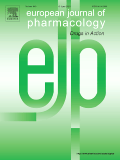
“Granulocyte Colony-Stimulating Factor (G-CSF) is a well-known hematopoietic stem cell (HSC) mobilizing agent used in both allogeneic and autologous transplantation. However, a proportion of patients or healthy donors fail to mobilize sufficient number of cells. New mobilization agents are therefore needed.
Endocannabinoids (eCBs) are endogenous lipid mediators generated in the brain and peripheral tissues and activate the cannabinoid receptors (CB1, CB2). We suggest that eCBs may act as mobilizers of hematopoietic stem cells (HSC) from the BM under stress conditions as beta adrenergic receptors (Adrβ).
This study demonstrates that bone marrow (BM) mesenchymal stem cells (MSCs) secrete anandamide (AEA) and 2-arachidonylglycerol (2-AG), and peripheral blood (PB) and BM microenvironment contain AEA and 2-AG. 2-AG levels are significantly higher in PB of the G-CSF treated group when compared to BM plasma. BM mononuclear cells (MNCs) and CD34+HSCs, express CB1, CB2 and Adrβ subtypes. CD34+HSCs had higher CB1 and CB2 receptor expression in G-CSF untreated and treated groups when compared to MSCs. MNCs but not MSCs expressed CB1 and CB2 receptors based on qRT-PCR and flow cytometry (FC). AEA and 2-AG stimulated HSC migration was blocked by eCB receptor antagonists in in vitro migration assay.
In conclusion, components of the eCB system and their interaction with Adrβ subtypes were demonstrated on HSCs and MSCs of G-CSF treated and untreated healthy donors in vitro, revealing that eCBs might be potential candidates to enhance or facilitate G-CSF-mediated HSC migration under stress conditions in a clinical setting.”
https://www.ncbi.nlm.nih.gov/pubmed/29030083
http://www.exphem.org/article/S0301-472X(17)30813-5/fulltext



